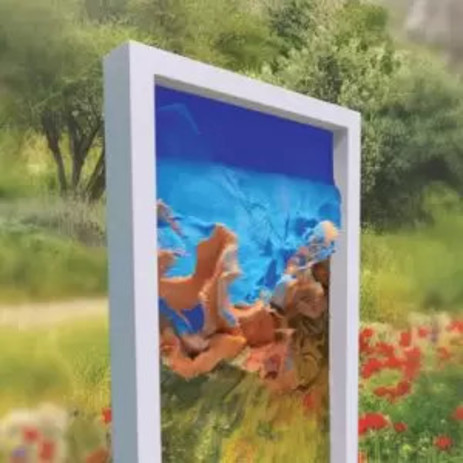Seeing the invisible: Art exhibition experienced through augmented reality
Visitors will be able to enjoy the invisible art through an app that is designed for people to enjoy the ‘Seeing The Invisible’ exhibition through their smartphones.
Anamazon (limb) appears in harsh discordant mixture of sounds from the Amazon in a natural environment. Pulsating waves run through the branch similar to an organ pumping blood through its capillaries while a sticky green fluid appears from its wounded broken edge.
JOHANNESBURG – Last year, 12 botanical gardens launched a contemporary artwork with augmented reality technology which featured works by international artists such as Ai Weiwei, Refik Anadol, El Anatsui and Isaac Julien CBE RA, among others.

Isaac Julien’s Stones Against Diamonds (Ice Cave) takes an inspiration from a letter written by Brazilian architect Lina Bo Bardi, who was shot in Iceland’s remote ice caves in the Vatnajökull region. Picture: Royal Botanical Gardens
In 2022, they will further extend to 10 locations for their second season this October.
Visitors will be able to enjoy the invisible art through an app that is designed for people to enjoy the Seeing The Invisible exhibition through their smartphones.

Anamazon (limb) appears in harsh discordant mixture of sounds from the Amazon in a natural environment. Pulsating waves run through the branch similar to an organ pumping blood through its capillaries while a sticky green fluid appears from its wounded broken edge. Picture: Royal Botanical Gardens
This time, for their second season, the exhibition will open in countries like Australia, Canada, England, Greece, Israel, Singapore, South Africa and the United States.
As an artist always inspired from the nature that makes Nature. Truly honoured to bring our studio’s most ambitious research called Machine Hallucinations to gardens around the world with AR technology.
Refik Anadol

Refik Anadol’s work is based on a series of synesthetic reality experiments focused on how people and the machines can collaborate to help us experience nature in a new way. Picture: Royal Botanical Gardens
The exhibition invites viewers to contemplate contemporary notions relating to site and non-site, physical and digital realms. In 1968, when Robert Smithson created his series Site/Non-site, addressing the tension between outdoors and indoors, scattered and contained, natural and constructed, these themes were at the forefront of theoretical discourse and artistic practice. Today, as questions pertaining to the physical and digital realms become central to our existence, they inevitably become a part of the artistic discussion too, and form the very
heart of this exhibition.Hadas Maor – The co-curator at Seeing The Invisible

The work is based on the significance of the number zero – one of the first important innovations by a Muslim scientist. Persian scholar Muhammad Ibn Musa Al-Khwarizmi discovered the number zero and considered it a number within the field of algebra. Picture: Hannah Rendall
This type of exhibition allows artists to be creative in terms of expansive, immersive works that have features of the natural landscape beyond physical work.
The works that are going to be featured in the exhibition will be related to themes surrounding the nature, sustainability and explore a new take on art by fusing two worlds -the physical and the digital world.
For all the latest lifestyle News Click Here

